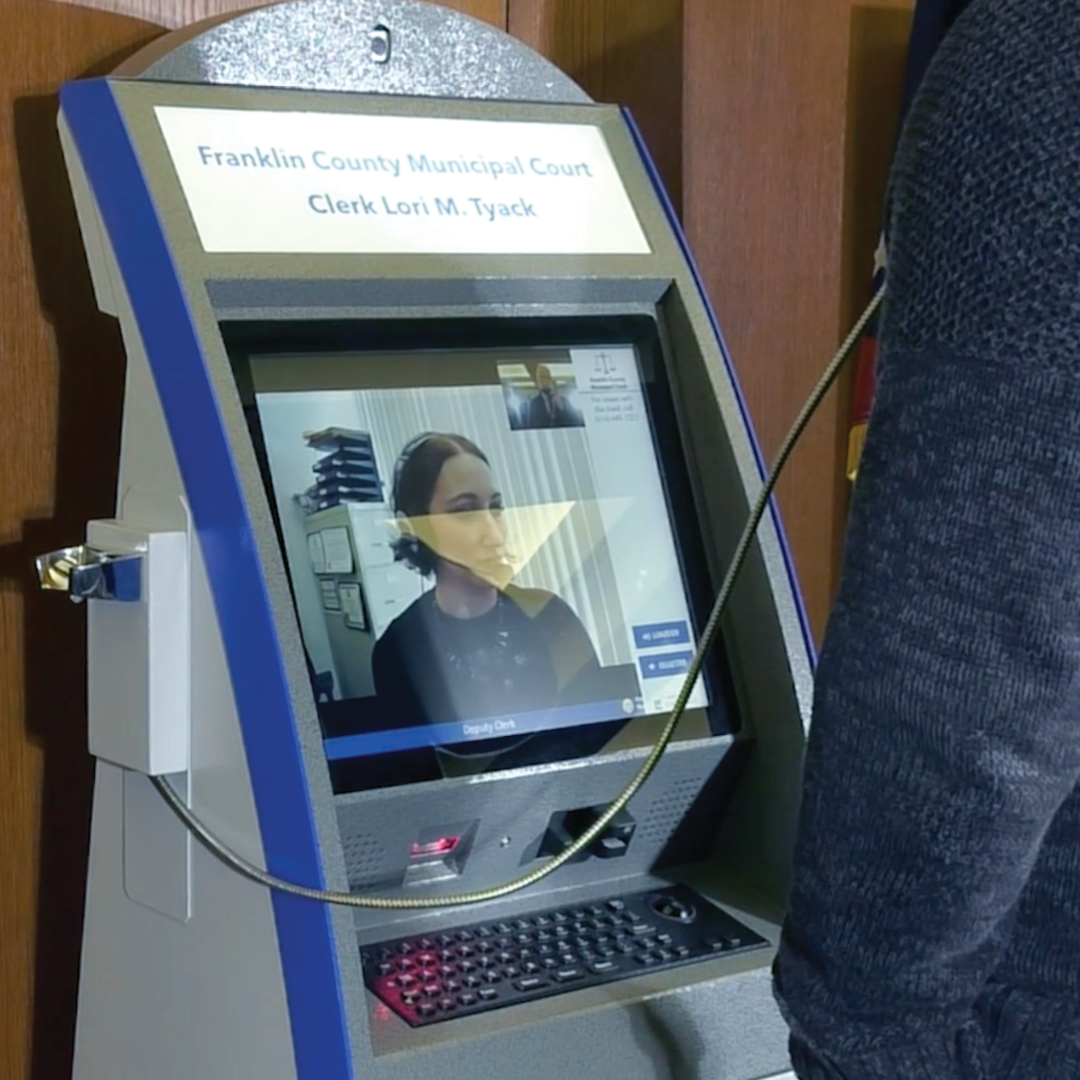Bonds Can Be Paid Through New Interactive Kiosks

People paying a bond can remotely connect to the Franklin County Municipal Court Clerk’s Office through interactive kiosks.
An Ohio clerk of court is leveraging audio and video technology to offer a new, easier way for paying a bond.
The service from the Franklin County Municipal Court Clerk’s Office relies on live audio and video on interactive kiosks that connect someone paying a bond to a deputy clerk. Bonds are a financial condition used by courts to ensure that a defendant appears in court when required.
Clerk of Court Lori Tyack and Project Coordinator Tim Fisher shared details about the interactive kiosks as part of an Ohio Judicial College series on court innovations.
A bond can be paid instead of going to jail by a person who is eligible based on their criminal charge, or by someone else paying on the person’s behalf. Two interactive kiosks are stationed at a Columbus corrections center, which is located about 6 miles from the clerk’s office where deputy clerks handle the payments.
Once reached via the kiosk, the deputy clerk verifies the identity of the person paying and has the person scan a government-issued identification, such as a driver’s license, state ID, or passport. The deputy clerk looks up the relevant court case and accepts payment by credit card or cash. The roles and responsibilities of the person paying the bond are explained, as are the different types of bonds. A cash bond requires payment of the full bond amount plus state fees in cash, while 10% of the bond amount is deposited if it’s an appearance bond. The clerk goes over the bond contract, and the individual signs it electronically, and documents are emailed to the corrections facility.
The clerk’s office put together a video explaining the process.
“This capability allows us to enhance our ability to assist customers and complete transactions remotely, saving time, money, and resources,” the video concluded.
With the use of kiosks, the staff of the clerk’s office can process bond payments without a physical presence at the corrections center, said Tate Wooding, public relations director for the clerk’s office. They can help people over video, while also assisting in-person visitors needing services.
Wooding also noted that the new technology saves time for law enforcement. They make fewer trips escorting individuals with criminal charges back and forth from the corrections center to the clerk’s office to pay bonds.
In addition, if the person who gets bond is paying for it, having the kiosks at the corrections center simplifies the process. And for family members or loved ones, the new technology also saves time, Wooding said. They can go to one location to pay and pick up the individual.
